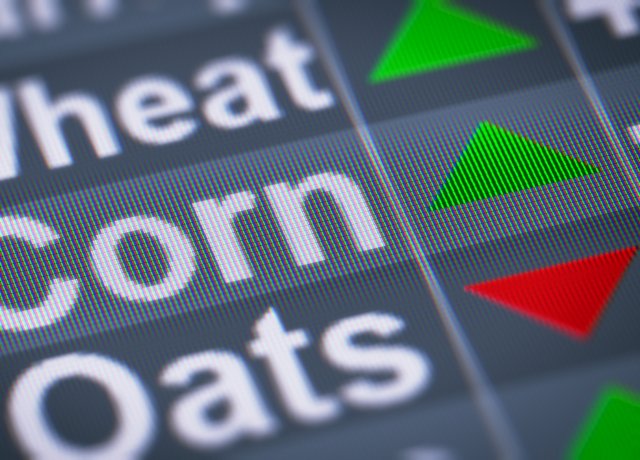Wheat, Soybean, Corn Prices Expected to Have Choppy 2023

Russia’s invasion of Ukraine sent U.S. grain futures soaring early in 2022 before their recent retreat. The new year promises to be another volatile one.
Futures for wheat and soybeans reached record highs earlier in 2022, and corn futures notched their highest level in more than a decade. The war stifled supply, and so did dry weather in many crop-growing areas.
Now, grain prices have fallen close to where they started 2022. The decline tracks with an overall easing of prices for commodities from natural gas to cotton and lumber, which have slipped in recent months after surging. More interest-rate boosts by the Federal Reserve and other central banks to cool economies—a process many analysts say could result in at least a modest recession in 2023—are expected to keep a lid on demand.

For grain prices, the outlook is uncertain, in part because they hinge so much on a war for which no end seems to be in sight. Russia’s February invasion jammed up grain exports out of the Black Sea region and led to a standoff between Russia and Western nations over Russia’s energy exports, sending ripples through the global economy.
An agreement reached in July allowed for the safe passage of grain from war-torn Ukrainian ports, freeing up millions of tons of food products. In November, both sides extended the agreement for another 120 days. Still, the deal is fragile. Russia briefly backed out in October and continues to attack Ukrainian port cities. Ukraine’s grain exports remain below levels before the war began, according to data from the United Nations Food and Agriculture Organization.
“The wild card for grains is the Russia-Ukraine shipping deal and its survivability,” said commodities analyst Jim Wyckoff. “It’s a shaky situation that grain traders will continue to monitor very closely.”
Western countries including the U.S. recently put price caps on international sales of Russian crude, a move to strike at the Kremlin’s war spending. Russia said last week that it wouldn’t sell oil or petroleum products to those countries.
Movements in crude-oil prices influence agricultural futures because demand for U.S. corn and soybeans stems in part from renewable fuels. Corn is the key ingredient for producing ethanol, while soybean oil is a vegetable oil used for the production of biofuels. Higher oil prices make producing such fuels more attractive, stimulating demand for the underlying grain.
Grain futures shot up to historic levels in the early days of the Russia-Ukraine war. Most-active wheat futures trading on the Chicago Board of Trade rose to a record high of $12.94 per bushel in March, beating the previous high set in 2008. Soybean futures also found their record high, rising to $17.69 per bushel in June. Corn futures climbed to $8.14 per bushel in April, the highest they have been since 2012.
Futures have since given back some of those gains. On Friday, corn futures closed down 0.2% to $6.77 a bushel, soybeans closed up 0.5% to $15.22 a bushel, and wheat closed up 2.2% to $7.93 a bushel.
Some analysts are betting that prices for grain and other commodities will slip in 2023 as interest rates continue to rise.
“We think most commodity prices will ease back in early 2023, at the height of the global recession and monetary tightening in many major economies,” said Caroline Bain, chief commodities economist with London-based Capital Economics, in a note published in December.
China, the world’s leading grain consumer, also will affect the outlook for agricultural futures in 2023. The country recently said it would rescind its strict measures to control the spread of Covid-19.
“China should see a period of significant economic growth in 2023, but that is expected to be capped in the first half of the year by rapidly spreading Covid,” said Arlan Suderman, chief commodities economist with StoneX Group.
However, farmers also are contending with higher operational costs, including for fertilizer and farm equipment, and that might keep grain prices elevated.
“Grains tend to trade at or near their cost of production, but historically seldom trade below production cost,” said Jake Hanley, managing director and senior portfolio specialist with Teucrium Trading, which manages agricultural ETFs.
Prices for fertilizer components such as urea have pulled back from record highs earlier in 2022, but remain well above the five-year average, according to data from commodities research firm DTN.
Prices for natural gas, another raw material for fertilizer, have fallen sharply over the past month, but they are also up from a year ago.
Read also
Join with the EARLY RATE – 22 International Conference BLACK SEA GRAIN.EUROP...
China cuts 2024/25 corn production forecast in December outlook
USDA experts cut forecasts for world wheat production, consumption and exports, bu...
Ukrainian sugar exports may break the record for the last 24 years
Palm oil stocks in Malaysia in November fell to a minimum in the last 4 years
Write to us
Our manager will contact you soon



